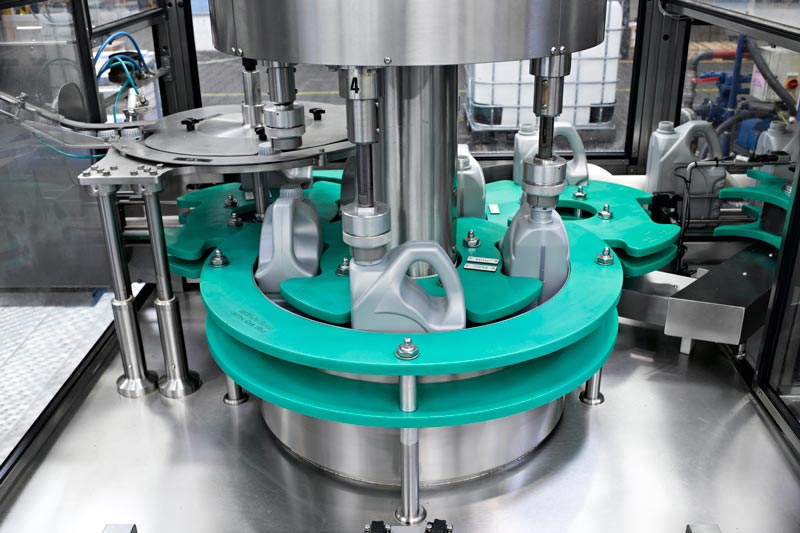
Lubricant counterfeiters turning to e-commerce
Counterfeiters are destroying the copyright and innovation of brand owners. Typically, these opportunistic criminals are drawn to fast-moving international brands with a high business-to-consumer sales component. Lured by the prospect of high-profit margins, counterfeiters are willing to disregard the prospect of fines and penalties from governments. Products where performance evaluation is delayed or intangible, such as finished lubricants, are particularly susceptible to forgery.
In the lubricant space, a variety of counterfeiting approaches are employed. The most popular is the part or complete refill of the original packaging. Counterfeiters will also use the labels of more expensive brands to sell recycled products or manufacture new lookalike packs filled with inferior products. Passenger car motor oil (PCMO), heavy-duty motor oil (HDMO), motorcycle oil (MCO), lubricating grease, metalworking fluids (MWF), hydraulic fluids, and industrial engine oils are at the highest risk of counterfeiting, according to a recent member survey undertaken by the Asian Lubricants Industry Association (ALIA) based in Singapore. China is world-renowned for the prevalence of imitation products. Malaysia and Myanmar are also large markets in terms of counterfeit penetration.
While a fake quart of oil may appear harmless to the uninitiated, the repercussions for automotive and industrial machinery can be immense. Oil leakage, equipment damage — such as rusting and corrosion, increased downtime, reduced machine life, decreased oil drain intervals, lower efficiency, higher wear, and friction are all symptoms of bogus lubricants. Ultimately, a phony lubricant can lead to total system failure.
During the Covid-19 pandemic, counterfeiters have gained traction. Speaking at a recent ALIA Member-to-Member Sharing Session on “Counterfeiting in the Asian Region”, Sharmini Lohadhasan, ALIA chair for the Subcommittee on Governance, Best Practices, and International Relations, emphasised the difficulty of detecting counterfeit lubricants. Lohadhasan was presenting the results of an ALIA whitepaper on “Counterfeit Lubricants in Asia” that was prepared in collaboration with global consulting and research firm Kline & Company.
A lack of awareness of the technicalities of lubricant products and price sensitivity are major reasons for the growth of counterfeits. Yet, a few dollars saved on a low-cost forgery could cost end-users thousands of dollars in repairs.
In most countries, counterfeit products cater to the domestic market and are sold through the high street and retail channels. Though, China, Malaysia, and Thailand are notorious for the export of fake products. Rural markets contribute a considerable share of fake products, due to low customer education. The ALIA whitepaper identified Indonesia as one of the major rural markets for counterfeiting in Asia.
Emerging channel for counterfeit lubricants
Do-it-for-me markets are particularly vulnerable to faking, with independent workshops a major counterfeit usage and sales channel in Asia. Ancillary spare part distributors are an emerging channel of distribution for counterfeit lubricants, according to the ALIA report.
Counterfeiters offer products in small packages and drums, so it is simple and cheap for retailers to repack and on-sell the products in small quantities. Small-scale lubricant factories nearby prominent industrial areas are a common location for manufacturing counterfeit products.
Counterfeits already account for an estimated 10% of total lubricant sales globally. Now, these unscrupulous retailers are looking beyond traditional retail channels for growth. E-commerce is the new channel adopted by counterfeiters to effectively reach a wider audience, says Lohadhasan. Customers are attracted by heavy discounts and promotions, with small parcel couriers a key distribution channel. Growth in counterfeit e-commerce mirrors similar shifts in authentic markets. An added complication is that distribution channels showcase both genuine and counterfeit products.
In some regions of Asia, counterfeiting is growing steadily, in others it is maintaining a steady course. Enforcement regulation varies from country to country, says Lohadhasan. Efforts to curb counterfeiting by raising customer awareness include campaigns, roadshows, and workshops. However, Tony Chen, marketing director at Valvoline China, told ALIA members that tackling counterfeiting is a “difficult balancing act.” Excessive communication can make consumers wary of the volume of fake products and question their choice of brand, he says. Chen suggests companies need to leverage new digital technologies to better understand consumer and sales channel behaviours. Supply chain monitoring and deeper engagement with port and customs authorities are also central to combating the scourge of counterfeiting.
Innovative anti-counterfeiting solutions
Over the last decade, there has been a surge in demand for innovative anti-counterfeiting solutions in packaging such as RFID, barcodes, and holograms. The ALIA report suggests these measures have helped slow the infiltration of counterfeit products in China, India, Malaysia, Philippines, and Vietnam.

Global e-commerce websites are intensifying their efforts to tackle imitation products. American multinational e-commerce corporation, eBay, has introduced a Verified Rights Owner (VeRO) program that allows owners of intellectual property rights and their authorised representatives to report listings that may infringe on those rights.
Amazon’s Project Zero leverages the combined strength of Amazon and its brand partners to block forgeries. Aided by key data points from brands, machine learning plays a central role in automating protections and proactively removing suspected counterfeits. The Amazon website confirms the ability to scan over five billion daily listings. For those that might slip through the cracks, a self-service tool allows the removal of counterfeit listings without directly contacting the e-commerce giant.
The world’s largest online commerce company, Chinese company Alibaba, is also very active in its anti-counterfeiting measures. Mick Ryan, director, brand cooperation at Alibaba Platform Governance, Alibaba Group, provided ALIA members with an update on the company’s efforts to respond to the spread of counterfeit products — both on and off its platform. Using data-driven lead discovery, Alibaba proactively generates leads and cooperates with rights holders on law enforcement referrals. The company’s Good-Faith Takedown Program alerts brand owners to suspicious listings and enables immediate removal. Alibaba has also partnered with the Zhejiang Public Security Bureau to launch Cloud Sword, a campaign to use big data and offline actions to stamp out fake goods on online platforms.
The key to Alibaba’s success in combating counterfeiting in China is clarity in the legal space, says Ryan. The Alibaba representative emphasised the good compromise between anti-counterfeiting and data privacy laws. It is clear when we can and cannot provide data to law enforcement, he says. Unfortunately, the same cannot be said for Southeast Asia. Battling counterfeiters in Southeast Asia is more difficult because we “don’t have the same level of certainty,” says Ryan.







